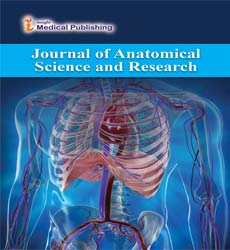Imaging of Cranial Nerves
Takshi Yumi*
Department of Neurology, the University of Tokyo, Tokyo, Japan
- *Corresponding Author:
- Takshi Yumi
Department of Neurology,
The University of Tokyo,
Tokyo,
Japan
Tel: 22369981598
E-mail: tkyumi@gmail.com
Received Date: October 28, 2021; Accepted Date: November 11, 2021; Published Date: November 18, 2021
Citation: Yumi T (2021) Imaging of Cranial Nerves. J Anat Sci Res Vol.4 No.5:4.
Description
Human body has twelve pairs of cranial nerves that regulate motor and sensory drives of the head and neck. Structure of cranial nerves is composite and it is vital to detect pathological alterations in case of nervous ailments. Consequently, it is important to know the most recurrent pathologies that may involve cranial nerves and identify their typical characteristics of imaging. Cranial nerve dysfunctions might be the effect of pathological processes of the cranial nerve itself or be related to tumors, inflammation, infectious processes, or traumatic wounds of adjacent structures. Magnetic resonance imaging (MRI) is considered the gold standard in study of cranial nerves. Computed tomography (CT) allows, regularly, an indirect view of the nerve and is helpful to demonstrate the intraosseous segments of cranial nerves, the foramina over which they exit skull base and their pathologic changes. Cranial nerves are composite and its knowledge is crucial to notice pathological alterations in case of nervous disorders. Steady-state free procession (SSFP) images are the best orders for the visualization of the cisternal sections showing dark cranial nerves against a background of bright cerebrospinal fluid (CSF). Computed tomography can be valuable to assess intraosseous sections of cranial nerves, skull base foramina, and bony traumatic lesions. Cranial nerve dysfunctions may be the consequence of pathological processes of the cranial nerve itself or may be related with tumor, inflammation, infectious processes, or traumatic injuries of adjacent structures. Radiologists, especially neuro radiologists should be aware with the anatomy of every cranial nerve and should know clinical and imaging findings of their dysfunctions. Congenital cranial dysinnervation ailments are a group of diseases caused by irregular development of cranial nerve nuclei or their axonal connections, resulting in aberrant innervation of the ocular and facial musculature. Its diagnosis could be assisted by the progress of high resolution thin-section magnetic resonance imaging.
Many ailment progressions manifest either primarily or secondarily by cranial nerve deficits. Neurologists, ENT surgeons, ophthalmologists and maxillo-facial surgeons are frequently confronted with patients with indications and signs of cranial nerve dysfunction. Seeking the cause of this dysfunction is a common symptom for imaging. In recent periods we have observed an unprecedented improvement in imaging techniques, allowing direct visualization of increasingly small anatomic structures. The development of volumetric CT scanners, higher field MR scanners in clinical practice and higher resolution MR sequences has made a tremendous contribution to the improvement of cranial nerve imaging. The usage of surface coils and parallel imaging allows sub-millimetric visualization of nerve branches and volumetric 3D imaging. Both with CT and MR, multiplanar and curved reconstructions can follow the entire course of a cranial nerve or branch, improving tremendously our diagnostic yield of neural pathology.
MRI is considered the gold standard in the study of cranial nerves. Summarizes the maximum vital orders and features in their study. Some scientific articles have underlined the importance of SSFP orders for the visualization of the cisternal spaces of cranial nerves cheers to their sub-millimetric spatial and high contrast resolution. These orders typically show dark cranial nerves against a background of bright CSF. The improvement of the nerve, after gadolinium administration, is related to disruption of the blood-nerve barrier and may be subordinate to neoplasm, inflammation, demyelination, ischemia, trauma, radiation treatment, and axonal degeneration. Three-dimensional T1-weighted gradient echo orders can offer a better imagining of the nerve improvement, surrounded by CSF. MRI could also be valuable to assess denervation deviations of “end-organ muscles.” CT is inferior to MRI in the visualization of the cranial nerves themselves, due to its low contrast resolution. So, it can be useful to assess the intraosseous parts of cranial nerves and the conceivable associated bony changes. Primarily, CT is best to study the bony foramina of the skull base and bony traumatic lesions.
Open Access Journals
- Aquaculture & Veterinary Science
- Chemistry & Chemical Sciences
- Clinical Sciences
- Engineering
- General Science
- Genetics & Molecular Biology
- Health Care & Nursing
- Immunology & Microbiology
- Materials Science
- Mathematics & Physics
- Medical Sciences
- Neurology & Psychiatry
- Oncology & Cancer Science
- Pharmaceutical Sciences
